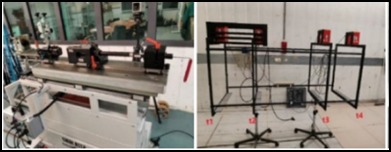Las normas de la OTAN “Procedimientos AEP-2920 para la evaluación y clasificación de armaduras personales” y NIJ Standard e 0101.06, indican el método para evaluar estadísticamente la resistencia de los materiales usados para la protección balística personal . Para ser validado y aceptado mediante estos procedimientos, el material debe resistir el impacto de un proyectil específico con una probabilidad de penetración parcial con un nivel de confianza superior al 90%. El presente estudio introduce un método de equilibrio energético para evaluar el nivel de confianza para la probabilidad de penetración parcial de materiales dúctiles y frágiles.
Abstract
NATO standards “AEP-2920 Procedures for the Evaluation and Classification of Personal Armor” and NIJ Standard – 0101.06, indicate the method to statistically assess the resistance of personal ballistic protection materials. To be validated and accepted through these procedures, a personal ballistic protection material should withstand an impact of a specific projectile with a probability of a partial penetration confidence level higher than 90%. The present study introduces an energy equilibrium method to assess the confidence level for the probability of partial penetration of ductile and brittle materials. The experiments performed in the Ballistics laboratory of the Royal Military Academy in Belgium, use a modified pendulum method that allowed the quantification of the energy balance before and after the ballistic impact. The results were then compared with the ones obtained using the method specified by the NATO standard and NIJ 0101.06, mentioned above. The outcome of this comparison shows the tendency of the values obtained by the pendulum method to faithfully follow the values obtained according to NATO and NIJ specifications. The presented method is not based on statistical estimations, but instead, an exact method, of computing the energy absorbed by the tested material. This is an advantage for the cases when the material to be evaluated is expensive or it is in the development phase and mass production is not possible.
![]() Fuente: https://www.sciencedirect.com
Fuente: https://www.sciencedirect.com


